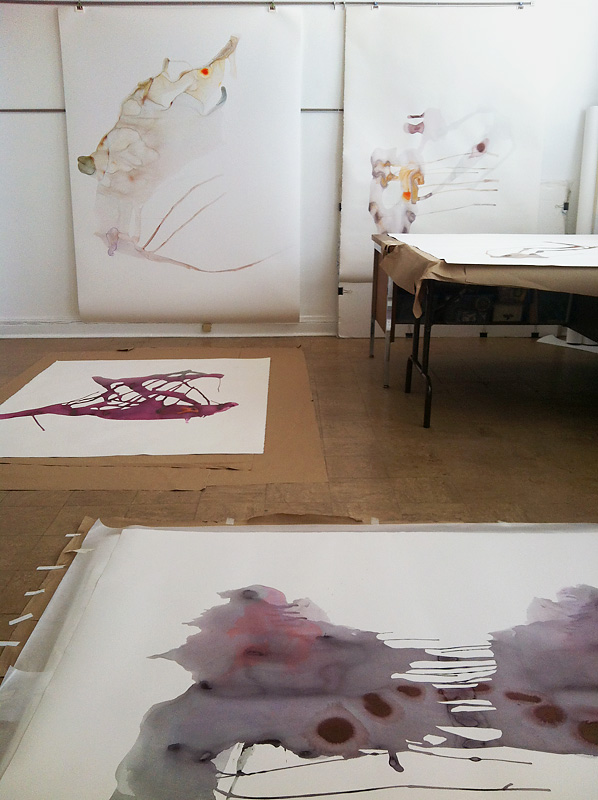
Although I recently began a new project at the International Museum of Surgical Science, I wanted to write about the work that I just completed, at least before the ideas drift into the distant past. The series, titled Foreign Bodies, was to some extent an unusual venture for me. I created the work by spilling ink and drawing human organs—as I often do—but in many ways the project was different than anything I’d done before.
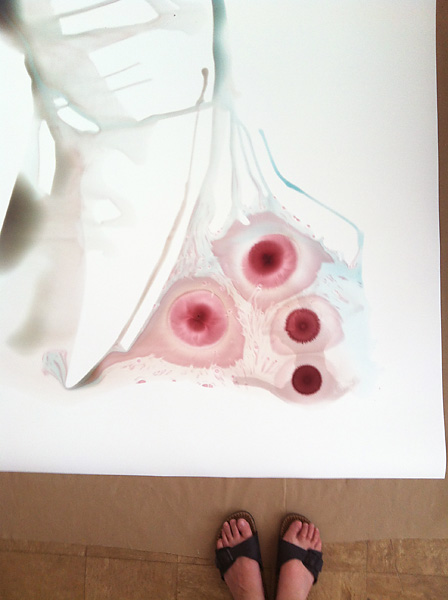
I had a two-person exhibition scheduled to open in late September 2013 at the New Harmony Gallery of Contemporary Art and I knew that I wanted to make really large work for it. In order to buy materials necessary for this project, I applied for an Individual Artists Program grant from the City of Chicago. The plan was this: if I didn’t get the grant, I’d buy the most affordable materials I could find and be careful not to waste them on too many experiments. However, if I did receive the grant, I would buy the fancy stuff and try several approaches and ideas. The problem was that I wouldn’t find out whether or not I was selected until the summer!
In July 2013 the city notified me that I was selected to receive the grant. I feel incredibly grateful for this opportunity to innovate and expand my ideas. I immediately purchased supplies to make around 6-8 large pieces by the end of September. I needed to think fast.
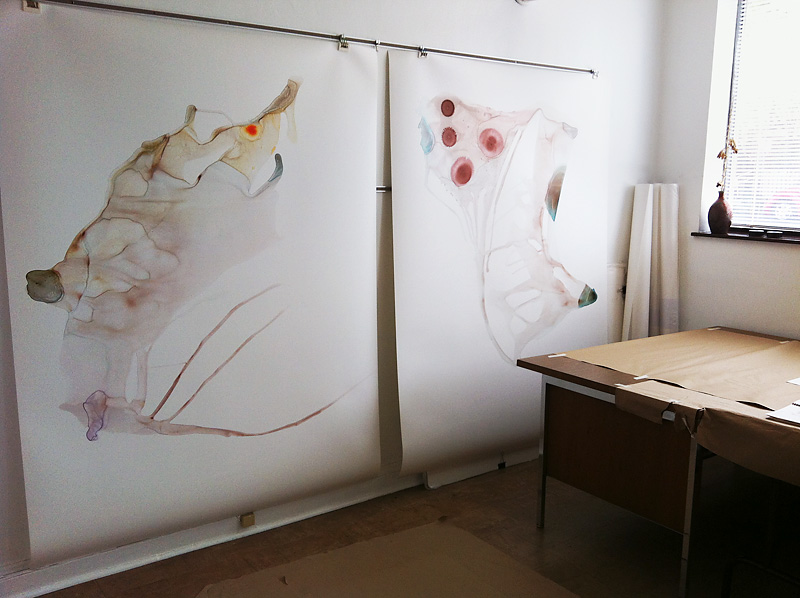
After buying some large rolls of watercolor paper and Yupo (polypropylene sheets), I began experimenting with spilled ink. I really enjoyed the look of watercolor paper, but Yupo was somewhat unfamiliar and had more potential to surprise me; for one, it made the ink look perpetually wet and saturated. The results were so vibrant that I had to put only 3-4 drops of ink into a cup of water in order to achieve the translucency and color I was looking for.
I found myself chasing the ink before it streamed off of the page and onto the floor of my studio. This drama may not have been absolutely necessary, but it made for some interesting forms. I enjoyed the performance involved in working with materials on this scale. As I lifted the edges of the paper, my movements were recorded in every stream. Once I was happy with the visual composition, I used an eyedropper to add a few drops of concentrated ink in the pools that had already formed. Throughout this process, I tried leaving large amounts of negative space for drawing.
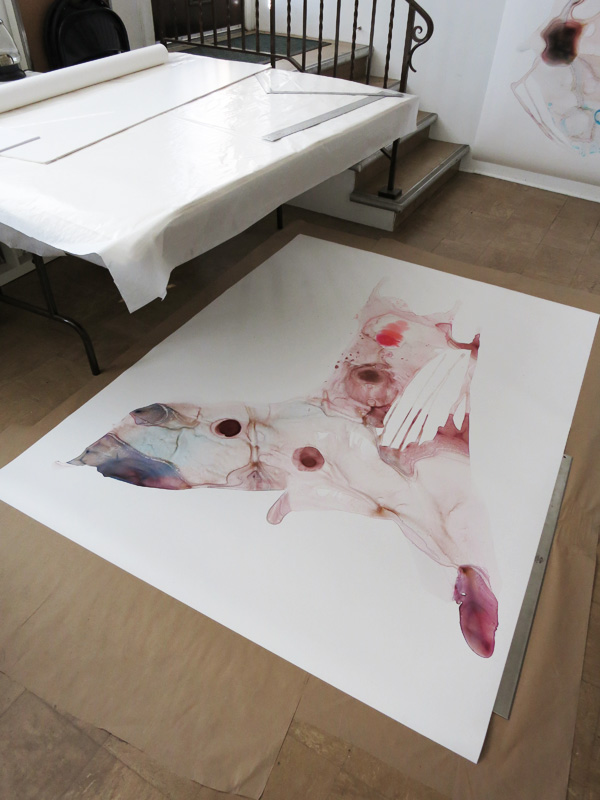
Once the ink was dry, I observed the shapes and made some initial reference sketches. For the drawing stage, I decided to go with graphite pencil instead of other mixed media such as colored pencil, watercolor, pen, etc. Part of this self-imposed restraint had to do with the limited time frame; the work was due in less than three months. The other reason was aesthetic: overwhelmed by the color, I felt that graphite was so muted in comparison that it would counterbalance the colored ink. This turned out to be true, at least for my sensibility. I also discovered that a very hard 6H pencil on Yupo looked more like a soft 2B on paper. (The image on the left shows what the 6H pencil-work looks like in a finished piece.) I learned various other things about Yupo… For example, I noticed that the ink cracked and flaked when applied in higher concentrations.
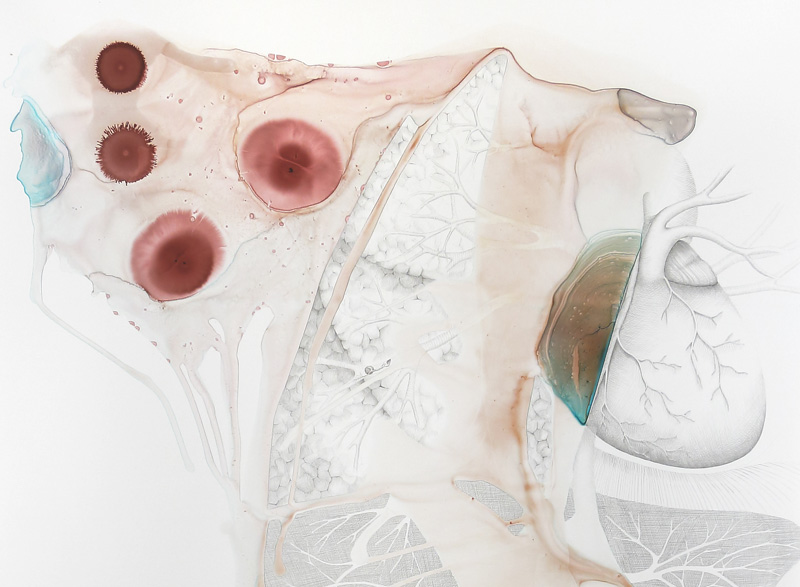
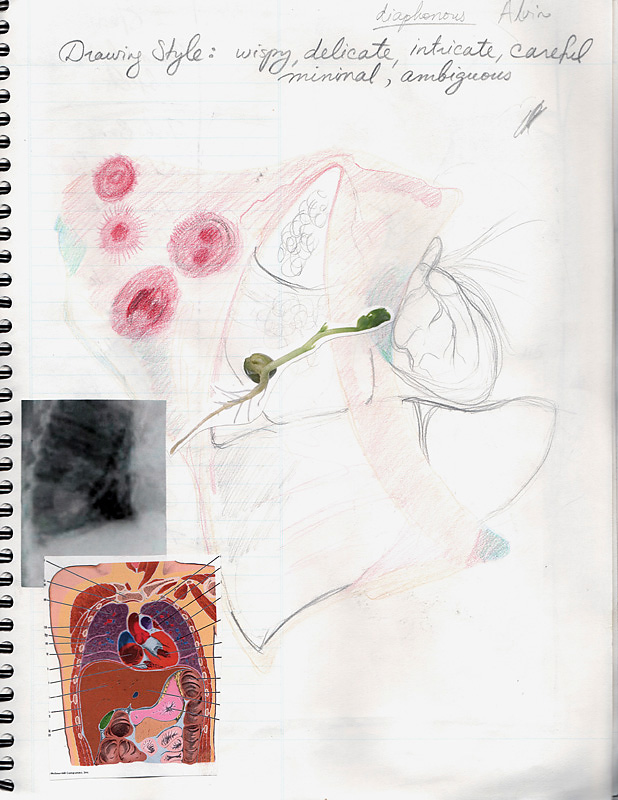
I hung the giant sheets in my studio and spent some time observing them. In one of the inkblots (the one closer to the window), I recognized a lung. This wasn’t enough. I had no idea what this body of work was going to address, so I began my research by surfing the web for examples of objects that have been found in people’s lungs. This led me to the strangest story: it was about a man who inhaled a pea that eventually sprouted. Right around this time it dawned on me to call this series Foreign Bodies—objects that don’t belong. With the second drawing, I was already stumbling upon all sorts of questions, such as: when is something a foreign body? Are gallstones foreign bodies? No. But they damage the body and need to be removed. What is the ontological difference between a foreign body and a familiar body? Is something a foreign body only when it is undesirable?
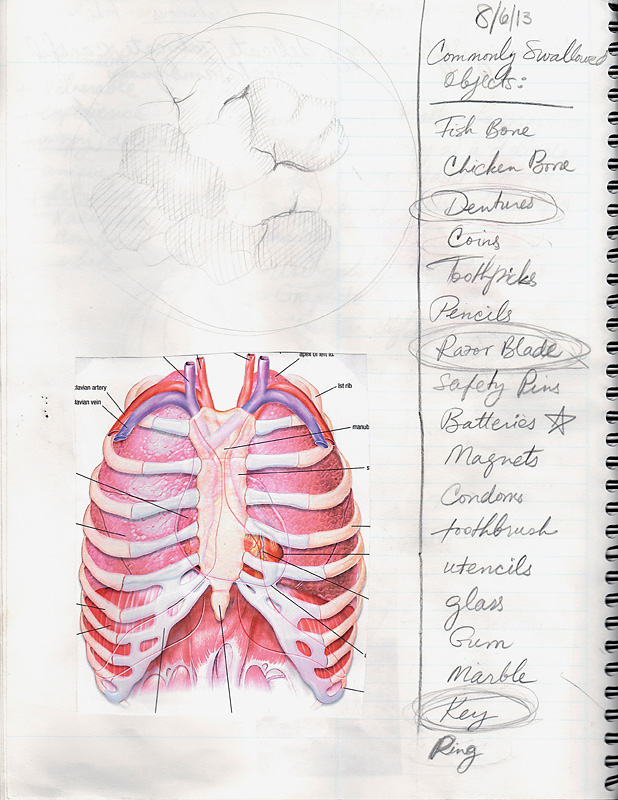
I proceeded to draw things that were inserted into the body accidentally, intentionally, mistakenly, structurally, aesthetically… The sketchbook pages show the initial plans for each piece. I wanted to learn the difference between various types of foreign bodies. Each one shows the culmination of various ideas, contemplations, and reflections. This train of thought ultimately launched an entire new way of thinking about the body, which I ended up carrying over to my next endeavor at the International Museum of Surgical Science (more about this in a future blog entry). If something can be described as foreign, is the familiar always clear? This, and a million other questions entered my mind.
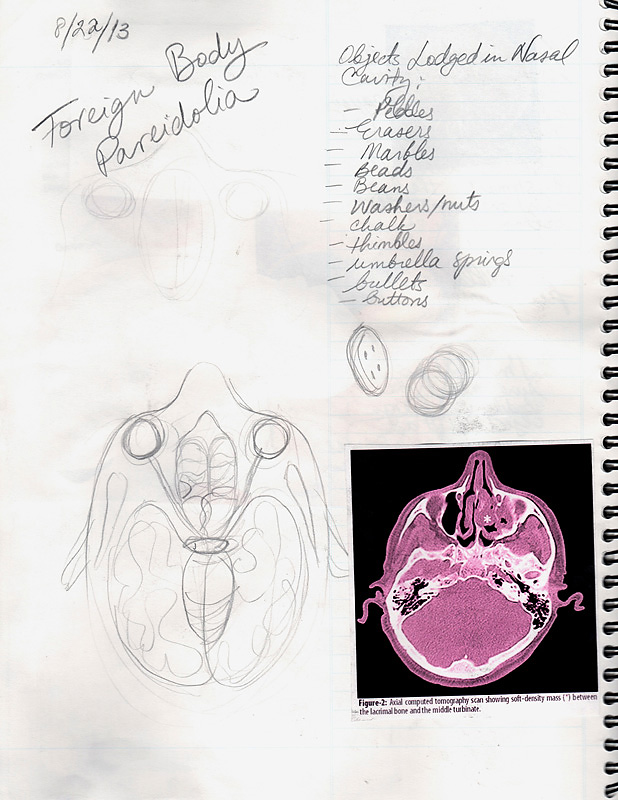
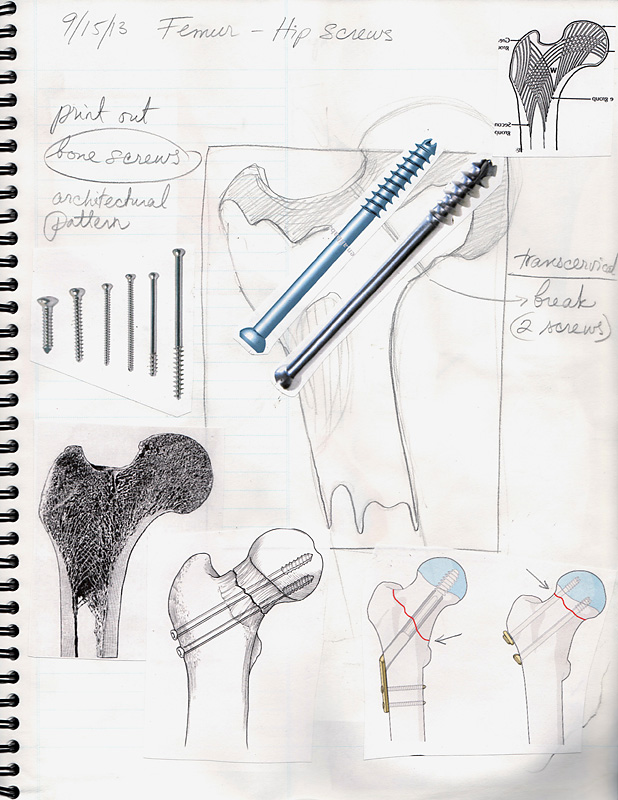
Coincidentally, several foreign bodies walked into my ink during the drying stage. This occurred without any intention on my part, but the conditions turned out to be just right: Yupo took hours, sometimes days, to dry. It is technically a sheet of plastic, so any ink sitting on the surface would not get absorbed; it simply had to evaporate. The giant sheets were situated on the floor of my garden-level studio, which meant that centipedes, winged ants, spiders, and various other creatures could crawl over the ink overnight. The next morning I would find a trail or two, especially from centipedes (they love moisture).
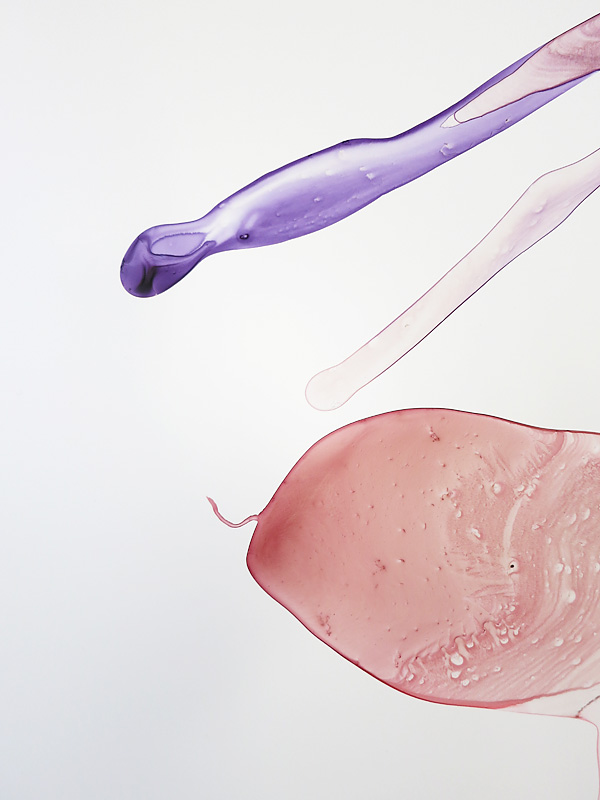
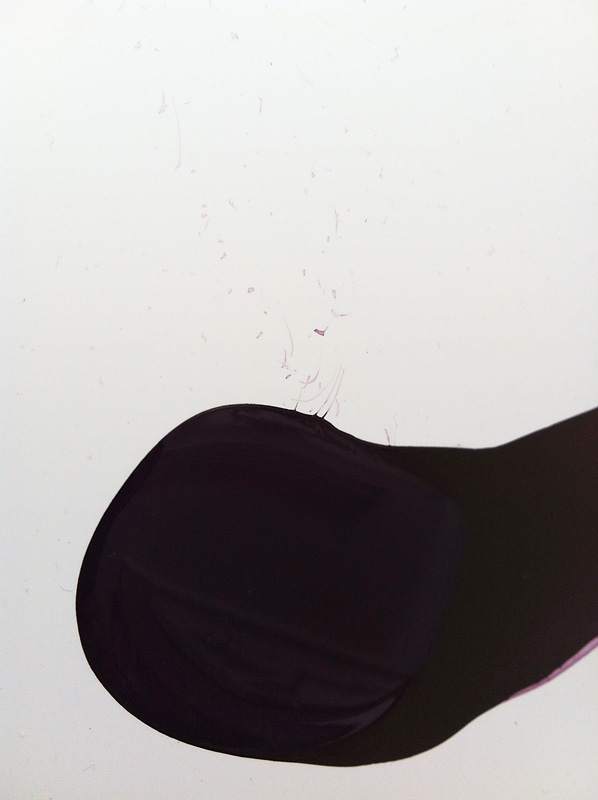
Having finished six large pieces for the exhibition, I still have four sheets left that I would like to use for additional work. Ever since the exhibit in New Harmony opened, I have been putting most of my time and energy into the new project at IMSS. A couple of months into my current residency I finally found a direction for the new work, so now I can go back, pick up where I left off, and complete four more drawings of foreign bodies.
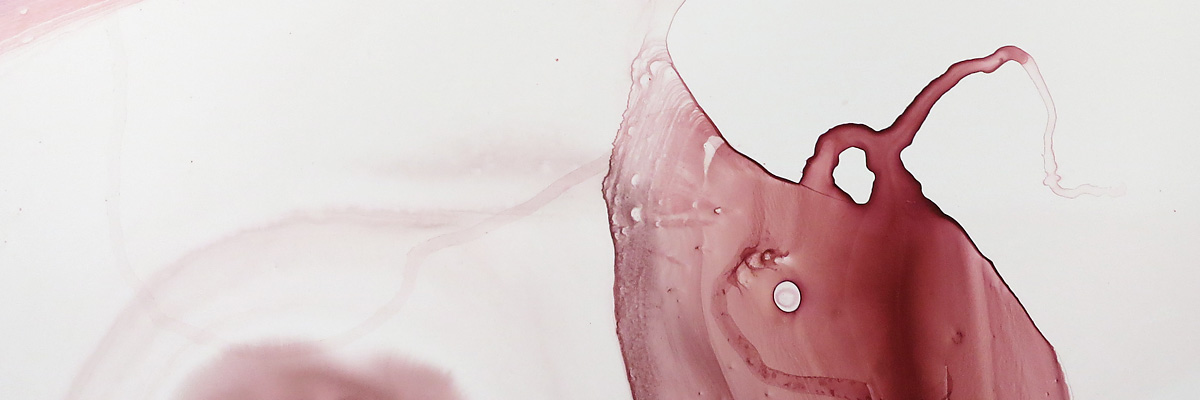
Vesna,
I like that you are explaining the process but also stating questions about the work that are universal and specific at the same time. This is a great series.
Vesna,
I really enjoyed reading about your process! Such a fascinating post.